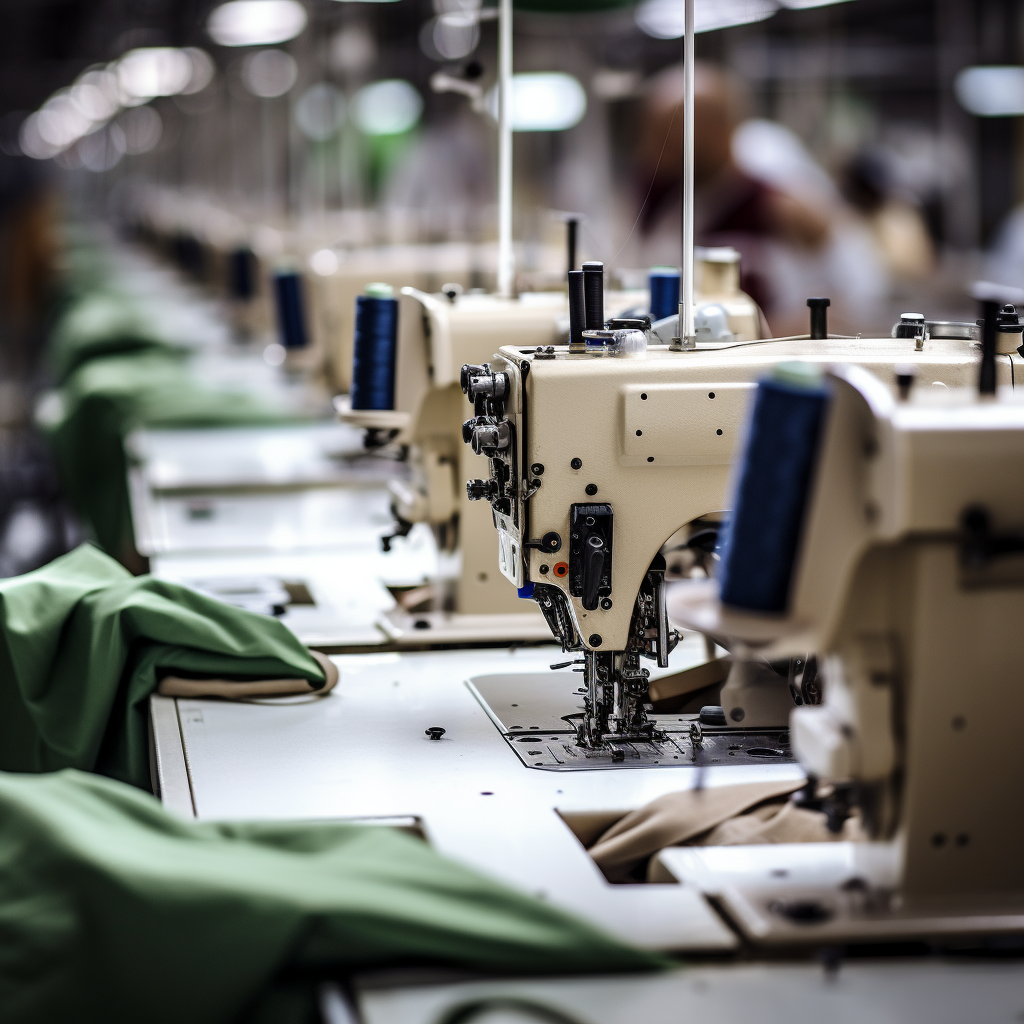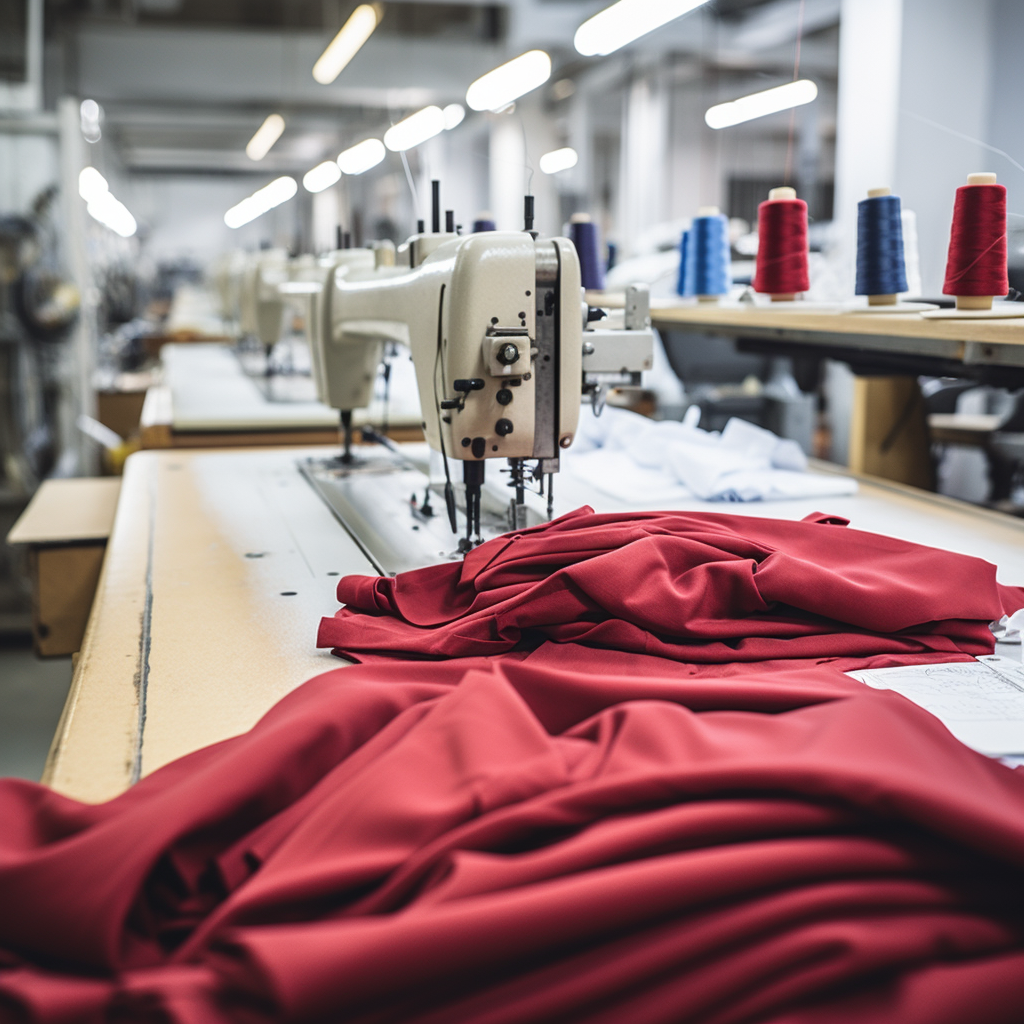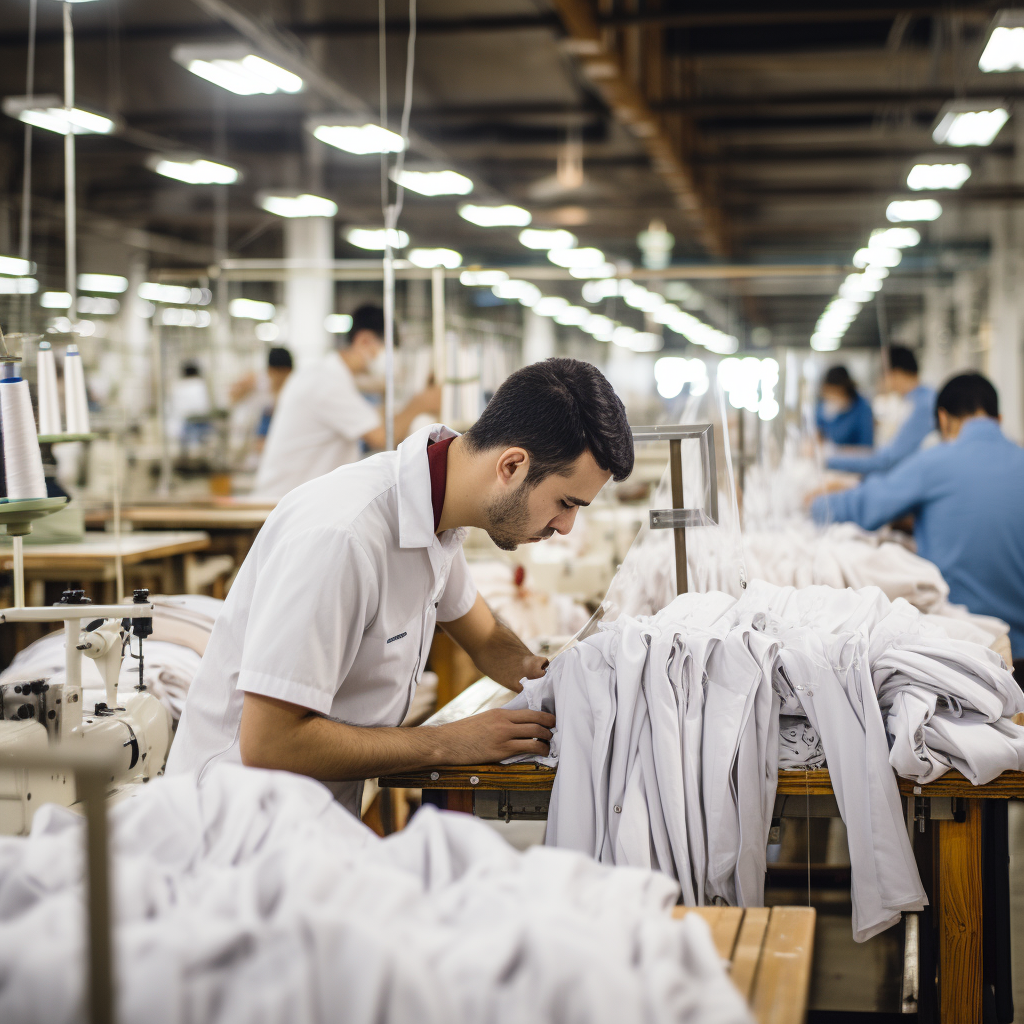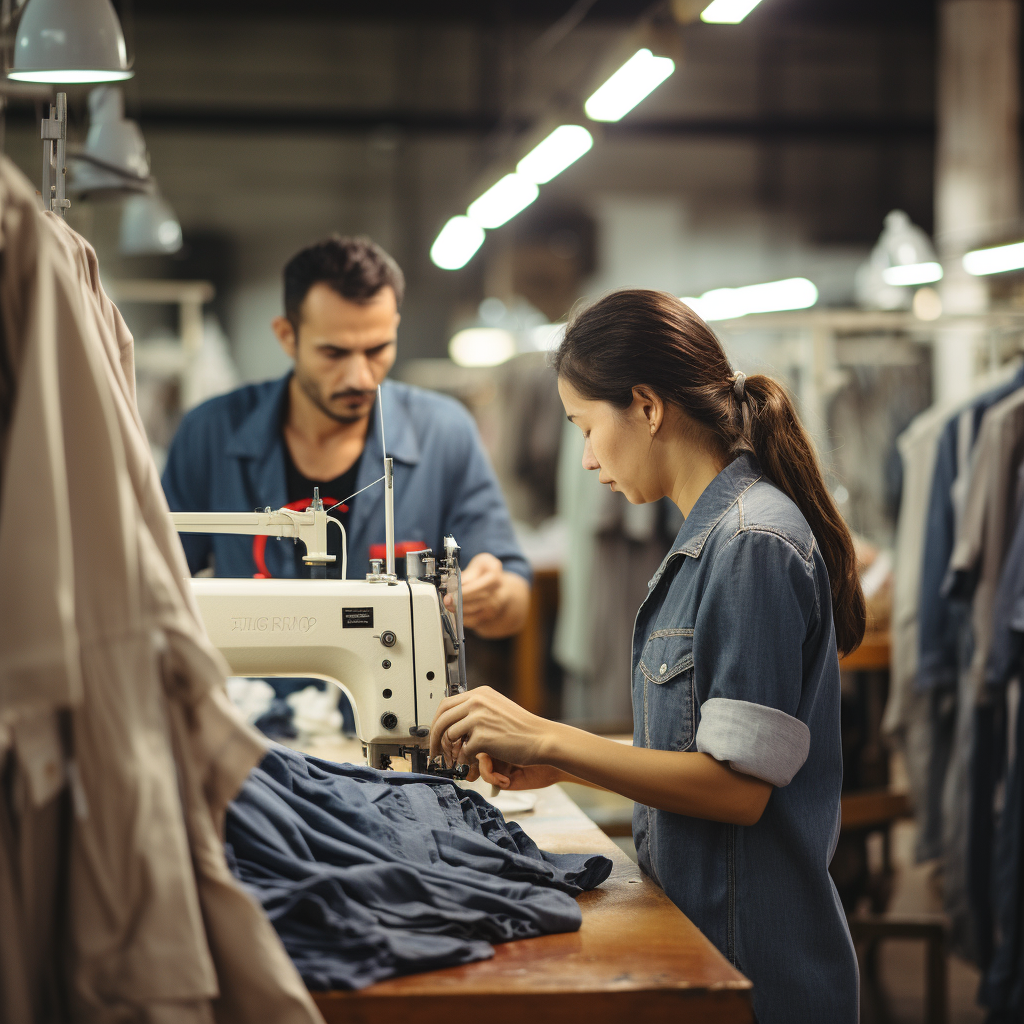Building a fashion brand can be exhilarating, yet daunting. The world of fashion is vast and competitive, with millions of brands vying for the top spot. At the heart of each successful brand lies a vital cog that often remains hidden from the limelight: the clothing manufacturer. They are the ones that bring your designs to life and give your brand its physical form. Without the right manufacturing partner, even the most ingenious designs can fall flat. This guide will take you through the steps of finding the right clothing manufacturer for your brand, offering expert insights and practical tips along the way.
Why Choosing the Right Clothing Manufacturer is Important
The importance of choosing the right manufacturer cannot be overstated. Here’s why:
| Factor | Description |
|---|---|
| Quality | Your manufacturer determines the quality of your final product, affecting customer satisfaction and brand reputation. |
| Cost | Manufacturers with efficient processes and good resources can produce clothing at lower costs, increasing your profit margins. |
| Scalability | The right manufacturer can scale production to meet growing demand, enabling your brand to grow smoothly. |
Defining Your Brand
Understanding your brand is an essential first step in your journey to find the right clothing manufacturer. A brand isn’t just a logo or a tagline—it’s a collection of perceptions in the mind of the consumer. It represents your company’s mission, vision, values, and character. Two main components to consider when defining your brand are your target audience and your brand identity.

3.1 Target Audience
Every successful brand starts with a well-defined target audience. You need to understand who you are trying to reach with your products. Your target audience will heavily influence all aspects of your business, from the design and quality of your clothes to the choice of your manufacturer.
Identifying Your Target Audience
To identify your target audience, start by creating a buyer persona. This is a semi-fictional representation of your ideal customer, based on market research and real data about your existing customers.
Here are some aspects to consider when creating your buyer persona:
| Aspect | Description |
|---|---|
| Demographics | This includes age, gender, location, income, occupation, and education level. |
| Psychographics | This includes lifestyle, hobbies, interests, values, and attitudes. |
| Buying behavior | Understand what motivates your audience to buy, their purchasing power, and their shopping habits. |
Understanding Your Audience’s Needs and Wants
Once you have identified your target audience, you need to delve deeper to understand their needs and wants. What are they looking for in clothing? Do they prioritize style over comfort, or is it the other way around? Are they willing to pay a premium for sustainable clothing? The more you understand your audience, the better you can meet their needs.
3.2 Brand Identity
Your brand identity is essentially your brand’s personality. It defines how you present yourself to your customers and how you want to be perceived by them. Your brand identity will play a crucial role in choosing a clothing manufacturer that aligns with your vision.
Defining Your Brand Values
Start by identifying your core values. What does your brand stand for? What are the guiding principles that inform your decisions? If sustainability is a core value, you will need to find a manufacturer that prioritizes eco-friendly practices. If you’re a luxury brand that values high-quality craftsmanship, you will need a manufacturer with the necessary expertise.
Crafting Your Brand Story
Your brand story is a narrative that encompasses the facts and feelings associated with your brand. It should connect with your customers on an emotional level. A compelling brand story can differentiate you from your competitors, making you more appealing to your target audience.
Building Your Visual Identity
Your visual identity, including your logo, color scheme, typography, and imagery, should reflect your brand identity. These elements will not directly influence your choice of manufacturer, but they will play a role in your overall branding, packaging, and presentation, which your manufacturer should be able to accommodate.
To sum up, understanding your brand is key to finding the right manufacturer. A manufacturer that aligns with your target audience’s needs and your brand identity will help ensure that your products resonate with your customers and reflect your brand’s image accurately.
Steps to Find the Right Clothing Manufacturer
Finding the right clothing manufacturer for your brand can be a complex process. It requires a balance of research, communication, and due diligence. Here are the steps you can follow:
4.1 Research and Gathering Leads
The first step in your search is to research potential manufacturers. Use every resource available to you, from online directories to trade shows, to industry contacts. Consider using websites like Alibaba, Maker’s Row, and MFG, which can provide a list of potential manufacturers. Look for manufacturers that specialize in your type of clothing, as they will have the expertise and equipment needed to produce your garments.
Conducting Online Research
| Method | Description |
|---|---|
| Directories | Online directories are comprehensive databases of manufacturers from around the world. They usually provide contact details and basic information about each manufacturer. |
| Social Media | Manufacturers often use social media platforms to showcase their work and interact with potential clients. Look for manufacturers who are active on social media and have positive engagement with their audience. |
| Reviews and Testimonials | These can give you a sense of the manufacturer’s reputation. Look for reviews on third-party websites for unbiased feedback. |
4.2 Contact and Communication
Once you have a list of potential manufacturers, it’s time to reach out to them. This step involves communicating your needs, asking about their services, and understanding their processes. During this step, gauge their responsiveness and professionalism. Good communication is crucial in a manufacturing partnership.
Questions to Ask Potential Manufacturers
| Question | Why It’s Important |
|---|---|
| Can you produce my type of clothing? | This ensures that the manufacturer has the skills and equipment necessary to produce your garments. |
| What is your minimum order quantity (MOQ)? | Some manufacturers only work with large orders, while others are more flexible. This must align with your production needs. |
| Can I visit your manufacturing facility? | Visiting the facility gives you a first-hand view of their operations and working conditions. |
4.3 Evaluating Expertise and Experience
Evaluate each manufacturer’s experience and expertise. This will give you an idea of their ability to produce high-quality garments and meet your expectations. You can do this by looking at their portfolio and asking about the brands they have worked with. Experienced manufacturers are more likely to deliver high-quality products and services.
Evaluating Expertise and Experience
| Aspect | Description |
|---|---|
| Portfolio | A manufacturer’s portfolio shows you the quality of their work and their design capabilities. |
| Past Clients | If they have worked with well-known brands, this could be an indicator of their experience and reliability. |
| Specializations | Manufacturers who specialize in your type of clothing will be more adept at producing your garments. |
4.4 Assessing Production Capacity
Assess whether the manufacturer can handle your production volume. This is crucial for meeting your demand and growing your business. Some manufacturers are better suited to small-scale production, while others can handle large orders.
Assessing Production Capacity
| Aspect | Description |
|---|---|
| Current Clients | If the manufacturer has large brands as clients, they likely have a high production capacity. |
| Equipment and Workforce | The number and quality of their equipment, as well as the size of their workforce, can indicate their capacity. |
| Lead Times | Manufacturers with shorter lead times may have higher production capacities. |
4.5 Reviewing Quality Control Processes
Quality control is a significant factor in your choice of manufacturer. A manufacturer with robust quality control can prevent defects and ensure consistency in your products, thereby protecting your brand reputation. Ask about their quality control processes, including the steps they take to ensure quality, how they handle defects, and how they ensure consistency.
Reviewing Quality Control Processes
| Aspect | Description |
|---|---|
| Quality Checks | How often do they perform quality checks? Do they check all items, or do they use random sampling? |
| Defect Handling | If a defect is found, how do they handle it? Do they have a process for fixing defects and preventing future ones? |
| Consistency | Ask how they ensure consistency across all products. This is crucial for maintaining your brand’s reputation. |
4.6 Sample Production
Before making a final decision, it’s essential to see a sample of the manufacturer’s work based on your designs. This allows you to assess their ability to produce to your specifications and quality standards.
Key Aspects in Sample Production
| Aspect | Description |
|---|---|
| Adherence to Design | Does the sample accurately reflect your design? Are the stitching, seams, and hems of good quality? |
| Material Quality | Is the fabric or other material used of high quality? Is it what you specified in your design? |
| Fit and Size | Is the fit and size of the sample as per your specifications? If not, the manufacturer might not be able to meet your needs. |
4.7 Discussing Pricing and Payment Terms
Once you’re satisfied with the sample, it’s time to discuss pricing and payment terms. This is a crucial step in the process, as the manufacturer needs to fit within your budget. You also need to ensure that the payment terms are agreeable to both parties.
Key Aspects in Pricing and Payment
| Aspect | Description |
|---|---|
| Pricing Structure | How is the pricing structured? Is it based on quantity, design complexity, or other factors? |
| Hidden Costs | Are there any hidden costs you should be aware of, such as setup fees, shipping charges, or charges for changes in design? |
| Payment Terms | When is payment due? What forms of payment do they accept? What are the penalties for late payment? |
Following these steps will increase your chances of finding a clothing manufacturer that aligns with your brand’s needs and goals. Remember, choosing a manufacturer is a significant decision that can impact the success of your brand, so take your time and choose wisely.

Key Considerations
When searching for the right manufacturer, several key considerations come into play:
5.1 Local vs. Offshore Manufacturing
Local manufacturers may offer better communication, easier logistics, and more oversight, while offshore manufacturers often provide lower costs.
| Consideration | Local | Offshore |
|---|---|---|
| Communication | Easier due to language and proximity | Can be challenging due to language barriers and time differences |
| Cost | Higher due to wages and operational costs | Lower due to cheaper labor and materials |
| Oversight | Easier due to proximity | More difficult due to distance |
5.2 Ethical and Sustainable Manufacturing
Ethical and sustainable manufacturing has become increasingly important. Consumers are more aware and concerned about the ethical and environmental implications of their purchases. Thus, finding a manufacturer that shares these values can be beneficial.
Navigating Common Challenges
Even with thorough research and meticulous planning, finding the right clothing manufacturer can present several challenges. Awareness of these obstacles is the first step towards finding effective solutions. Here are some common challenges and potential ways to navigate them:
6.1 Language and Cultural Differences
If you’re working with overseas manufacturers, language and cultural differences can sometimes lead to misunderstandings and miscommunications.
Solutions:
| Challenge | Solution |
|---|---|
| Language Barriers | Use a translator or translation service for clear communication. Many business correspondence platforms now include built-in translation services. |
| Cultural Differences | Understand and respect the local culture. This includes business etiquette, negotiation styles, and working hours. |
6.2 Quality Assurance
Ensuring consistent quality from your manufacturer is crucial for maintaining your brand reputation. But differences in understanding or expectations can sometimes lead to quality issues.
Solutions:
| Challenge | Solution |
|---|---|
| Inconsistent Quality | Regular quality checks and clear communication about your standards can help maintain consistency. |
| Poor Quality Materials | Specify the materials to be used and consider providing samples or references for clarity. |
6.3 Meeting Deadlines
Meeting production deadlines is crucial for your business operations. Delays can result in lost sales, missed opportunities, and damaged relationships with retailers or customers.
Solutions:
| Challenge | Solution |
|---|---|
| Missed Deadlines | Clear communication about deadlines and regular updates can help keep production on track. Consider including penalties for late delivery in your agreement. |
| Rushed Production Leading to Quality Issues | Avoid rushing your manufacturer as this can lead to quality compromises. Build buffer time into your schedule to accommodate unforeseen delays. |
6.4 Minimum Order Quantities
Many manufacturers have minimum order quantities (MOQs) that may be too high for smaller or start-up brands.
Solutions:
| Challenge | Solution |
|---|---|
| High MOQs | Look for manufacturers that specialize in small-batch production. You could also consider pooling orders with other businesses to meet the MOQ. |
6.5 Ethical Compliance
Ensuring that your manufacturer adheres to ethical labor practices can be challenging, especially with overseas manufacturers.
Solutions:
| Challenge | Solution |
|---|---|
| Unethical Labor Practices | Request to see the manufacturer’s labor certifications. Consider conducting an audit or visit the manufacturing facility personally to verify their practices. |
By understanding these challenges and preparing for them, you can make your journey to find the right clothing manufacturer smoother and more successful. Remember, overcoming these challenges is not just about solving problems, but also about building a strong and successful partnership with your manufacturer.
Case Studies
Reviewing real-life case studies can provide valuable insights and lessons learned in the process of finding a clothing manufacturer. Here are two such cases:
7.1 Case Study 1: Everlane
Everlane is an American clothing retailer known for its commitment to transparency and ethical manufacturing. The brand shares detailed information about the factories where its clothes are made, ensuring they meet rigorous standards for wages, reasonable hours, and environment.
Key Takeaways from Everlane’s Approach:
| Key Points | Description |
|---|---|
| Transparency | Everlane’s commitment to transparency builds trust with customers, differentiates the brand in a crowded market, and holds them accountable for maintaining ethical practices. |
| Ethical Manufacturing | By prioritizing ethical manufacturing, Everlane creates a positive brand image, appeals to socially conscious consumers, and helps to drive the fashion industry towards more ethical practices. |
| Long-term Relationships | Everlane works closely with its factories, building long-term relationships that ensure consistency in product quality and ethical standards. |
7.2 Case Study 2: Patagonia
Patagonia, an outdoor clothing and gear brand, has a strong commitment to sustainability. They carefully select their manufacturers based on their environmental impact, ethical labor practices, and quality.
Key Takeaways from Patagonia’s Approach:
| Key Points | Description |
|---|---|
| Sustainability | Patagonia’s commitment to sustainability aligns with its brand values, appeals to its target audience, and reduces its environmental footprint. |
| Manufacturer Selection | Patagonia’s rigorous selection process for manufacturers ensures that they align with the brand’s commitment to quality, sustainability, and ethical labor practices. |
| Supply Chain Transparency | By sharing details about its supply chain, Patagonia creates trust with its customers and holds itself accountable for its impact on the environment and society. |
These case studies show that finding the right clothing manufacturer involves more than just cost and capacity. It’s about finding a partner who aligns with your brand values, can meet your quality standards, and can help you build a brand that resonates with your target audience. Both Everlane and Patagonia are excellent examples of how aligning with the right manufacturers can help a brand fulfill its mission and resonate with its customers.

FAQs
- What is a clothing manufacturer? A clothing manufacturer is a company that produces clothing items based on your designs and specifications. They can provide a variety of services, from pattern making and sampling to full-scale production.
- How do I find a clothing manufacturer for my brand? Finding a clothing manufacturer involves research, reaching out to potential manufacturers, evaluating their expertise and production capacity, assessing their quality control processes, reviewing samples, and discussing pricing and payment terms.
- What should I look for in a clothing manufacturer? Key factors to consider include their expertise in your type of clothing, their production capacity, their quality control processes, their communication and responsiveness, their pricing structure, and their ethical practices.
- What are the challenges in finding a clothing manufacturer? Common challenges include language and cultural differences, ensuring quality, meeting production deadlines, dealing with minimum order quantities, and ensuring ethical compliance.
- How can I ensure the manufacturer produces high-quality clothing? To ensure quality, you can ask for samples, conduct regular quality checks, provide clear and detailed specifications, and build a strong relationship with your manufacturer based on clear communication.
You may also like
-
Automatic Fruit Wine Bottling Line for Small Wineries: A Complete Guide
-
How Does Plywood HSN Code Decide the GST Rate for Traders and Manufacturers?
-
POS Terminal Type: Which Is Best for Your Business?
-
How to Choose Fixed and Portable Gas Monitors for Industrial Gas Detection?
-
Simplifying Trademark Registration in Hong Kong: What Businesses Need to Know

